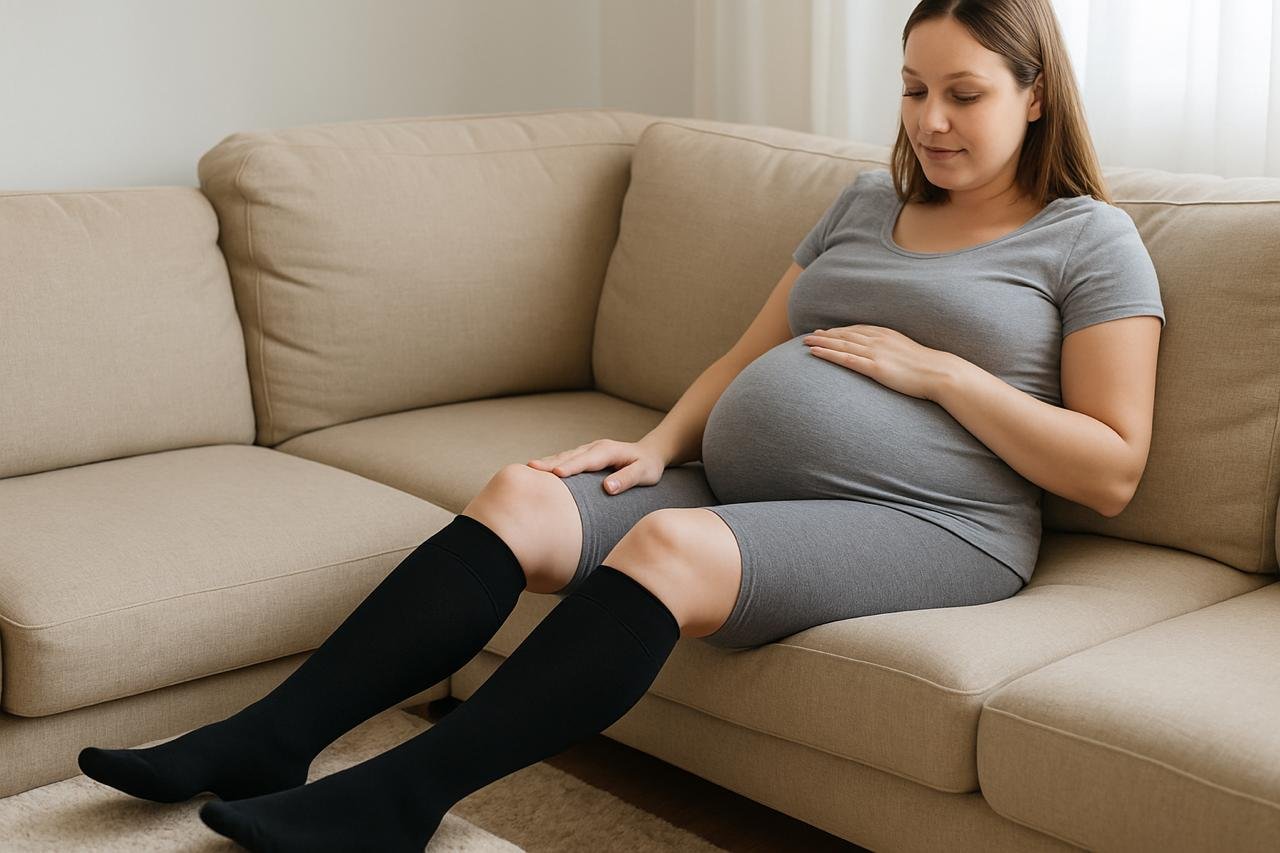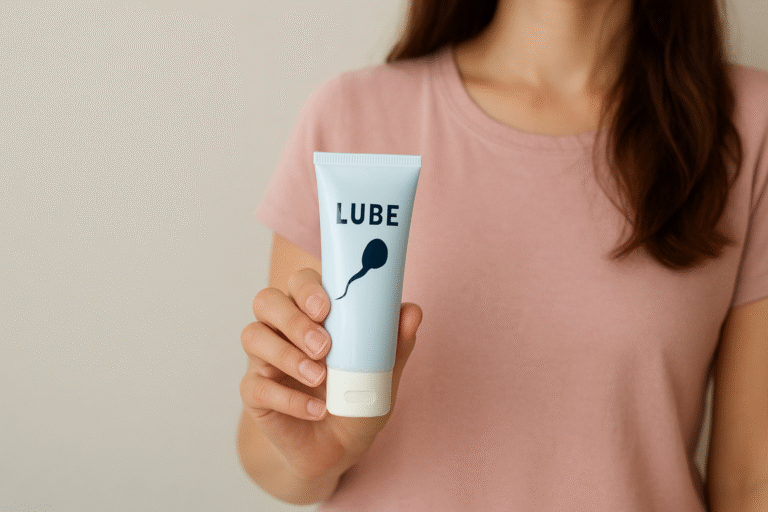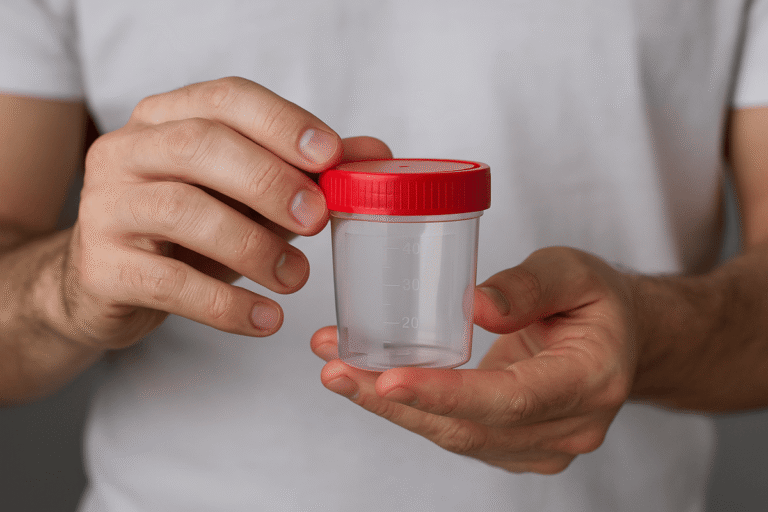Pregnancy brings immense joy—but let’s not sugarcoat it—it also brings physical challenges that many women aren’t prepared for. Swollen feet, aching calves, varicose veins, and leg cramps are common discomforts. While these symptoms are natural to some extent, they can become painful and affect daily activities. One underutilized yet highly effective tool for managing these symptoms is compression socks.
In this comprehensive guide, we’ll explore how compression socks can benefit pregnant women, the different types available, how to choose the right pair, and the signs that indicate you should seek medical attention. Whether you’re a first-time mom or adding another bundle of joy to your family, understanding the role of compression socks can significantly improve your pregnancy experience.
Also read: Warning Signs of Ectopic Pregnancy That You Should Never Ignore
What Are Compression Socks and How Do They Work?
Compression socks are a specialized type of hosiery designed to apply gentle pressure to the legs and ankles. This pressure helps improve blood circulation, prevent fluid retention, and reduce discomfort caused by venous insufficiency.
From a physiological standpoint, compression therapy supports the veins and muscles in the lower extremities by encouraging blood flow back toward the heart. When you’re pregnant, the increased volume of blood and hormonal changes can slow circulation, especially in the legs. The uterus also puts pressure on the inferior vena cava—a large vein that returns blood from the lower half of the body to the heart—leading to swelling and discomfort.
By exerting graduated pressure (strongest at the ankle and gradually decreasing up the leg), compression socks reduce the diameter of distended veins, increasing blood flow and reducing the risk of blood pooling.
Why Are Compression Socks Important During Pregnancy?
1. Reduces Swelling (Edema)
During pregnancy, blood volume increases by approximately 50%. While this is essential for supporting the developing fetus, it also leads to fluid accumulation in the legs, ankles, and feet—a condition known as peripheral edema. Compression socks help counteract this by enhancing lymphatic drainage and reducing the gravitational pull of fluids into the lower limbs.
2. Improves Blood Circulation
As estrogen and progesterone levels rise, vascular walls relax, causing blood flow to slow. Combined with the pressure from the growing uterus, this creates the perfect storm for circulatory problems. Compression therapy can mitigate these effects by keeping veins compressed and efficient, reducing the risk of blood clots.
3. Prevents Deep Vein Thrombosis (DVT)
Pregnant women are up to five times more likely to develop deep vein thrombosis, a potentially life-threatening condition caused by blood clots forming in the deep veins of the leg. Compression socks promote venous return and significantly reduce this risk, especially in women with a history of clotting disorders or those on bed rest.
4. Minimizes Varicose Veins
Around 40% of pregnant women develop varicose veins, often due to increased blood volume, hormonal shifts, and pressure on pelvic blood vessels. These swollen, twisted veins are not just cosmetic—they can be painful and persistent. Compression socks help reduce venous pressure and prevent the pooling of blood, potentially shrinking existing varicose veins and preventing new ones from forming.
5. Relieves Leg Cramps and Fatigue
Leg cramps—especially at night—are a frequent complaint during the second and third trimesters. Compression improves oxygen delivery to muscles and decreases the build-up of lactic acid, a known contributor to cramping and fatigue.
Different Types of Compression Socks
🔹 Graduated Compression Socks
These are the most common and effective socks for pregnant women. They are tightest at the ankle and gradually loosen as they go up the leg. This type of design encourages upward blood flow and supports venous return.
- Available in various compression levels:
- 15–20 mmHg: Mild compression for everyday wear and swelling prevention
- 20–30 mmHg: Moderate compression for more pronounced symptoms
- 30–40 mmHg: Medical-grade compression for high-risk individuals (use only under medical supervision)
🔹 Anti-Embolism Stockings
Primarily used in post-operative care or during periods of prolonged inactivity, anti-embolism stockings help prevent blood clots. These are not typically recommended for active pregnant women but may be advised during postpartum recovery or high-risk pregnancies involving bed rest.
🔹 Maternity Compression Tights
These provide full-length support and often include a belly panel to support the abdomen. They offer both leg compression and abdominal lift, making them ideal for women with pelvic pressure or lower back pain.
When to Start Wearing Compression Socks
Most women begin to notice swelling and discomfort in the second trimester, around 20 weeks. However, if you have a history of varicose veins, poor circulation, or DVT, your doctor may recommend starting even earlier.
Ideal times to wear compression socks:
- In the morning (before swelling begins)
- During travel (especially flights or long car rides)
- During long periods of standing or sitting
- During exercise or walks
Also read: Preeclampsia 101: A Survival Guide and Expert Tips for Parents
How to Choose the Right Compression Socks
🧦 Size Matters
Improperly sized socks can either be ineffective or dangerously tight. Measure the circumference of your ankle, calf, and, if applicable, thigh (depending on the style), and refer to the brand’s sizing chart for guidance. A snug fit that doesn’t cut off circulation is ideal.
📏 Length Options
- Knee-High: Most common and suitable for general leg swelling and fatigue.
- Thigh-High: Better for varicose veins or pooling above the knee.
- Pantyhose or Full Tights: Excellent for pelvic or lower back support.
🔄 Material and Breathability
Pregnancy can elevate body temperature, so choose moisture-wicking, breathable materials such as nylon, spandex blends, or cotton-lined fabrics.
🎯 Compression Level
Start with a mild to moderate level unless your healthcare provider advises otherwise. If the socks cause numbness, tingling, or increased discomfort, they may be too tight.
Real-Life Scenarios Where Compression Socks Help
- Sarah, a 32-year-old teacher in her third trimester, stands for hours each day. She noticed significant ankle swelling and fatigue after work. With compression socks, her end-of-day discomfort reduced by 70%.
- Maya, a frequent traveler in her second trimester, wore compression socks during a 6-hour flight and avoided the usual leg cramps and puffiness upon landing.
- Laila, diagnosed with varicose veins during her first pregnancy, began using thigh-high graduated compression socks early in her second pregnancy. Her veins didn’t worsen, and her leg pain remained manageable.
These real-world examples illustrate how the proactive use of compression socks can enhance comfort and prevent complications.
Also read: Cramps But No Period? 6 Early Pregnancy Signs You Shouldn’t Ignore
When to Consult a Doctor
While compression socks are generally safe and do not require a prescription for mild to moderate levels, it’s important to recognize warning signs that may indicate a more serious issue.
Seek medical advice if you notice:
- One-sided leg swelling or pain (could indicate a DVT)
- Skin discoloration, especially if bluish or dark purple
- Persistent skin irritation or rashes
- Shortness of breath or chest pain (emergency—may signal a pulmonary embolism)
- Varicose veins that worsen or bleed
Also, consult your OB-GYN or midwife before using high-compression socks, particularly if you have:
- Hypertension
- Diabetes
- Peripheral artery disease
- Clotting disorders
Compression Socks and Postpartum Recovery
The benefits of compression therapy extend beyond childbirth. During the postpartum period, particularly after cesarean delivery or complicated labor, the risk of blood clots remains elevated. Wearing compression socks can help maintain healthy circulation, reduce postpartum swelling, and accelerate recovery—especially when mobility is limited in the early days after birth.
Conclusion: Embracing Comfort and Circulatory Health
Pregnancy is a transformative journey, and taking care of your body during this time is not a luxury—it’s a necessity. Compression socks offer a non-invasive, affordable, and effective solution to some of the most common physical challenges faced by expecting mothers. From preventing varicose veins and deep vein thrombosis to relieving swelling and fatigue, they’re a simple addition to your prenatal care routine that can make a world of difference.
If you’re navigating the physical changes of pregnancy, consider discussing compression socks with your healthcare provider. A small decision like this can have a significant impact on your daily comfort and long-term vascular health.





[…] Also read: Compression Socks During Pregnancy: Benefits, Types, and When to See a Doctor […]